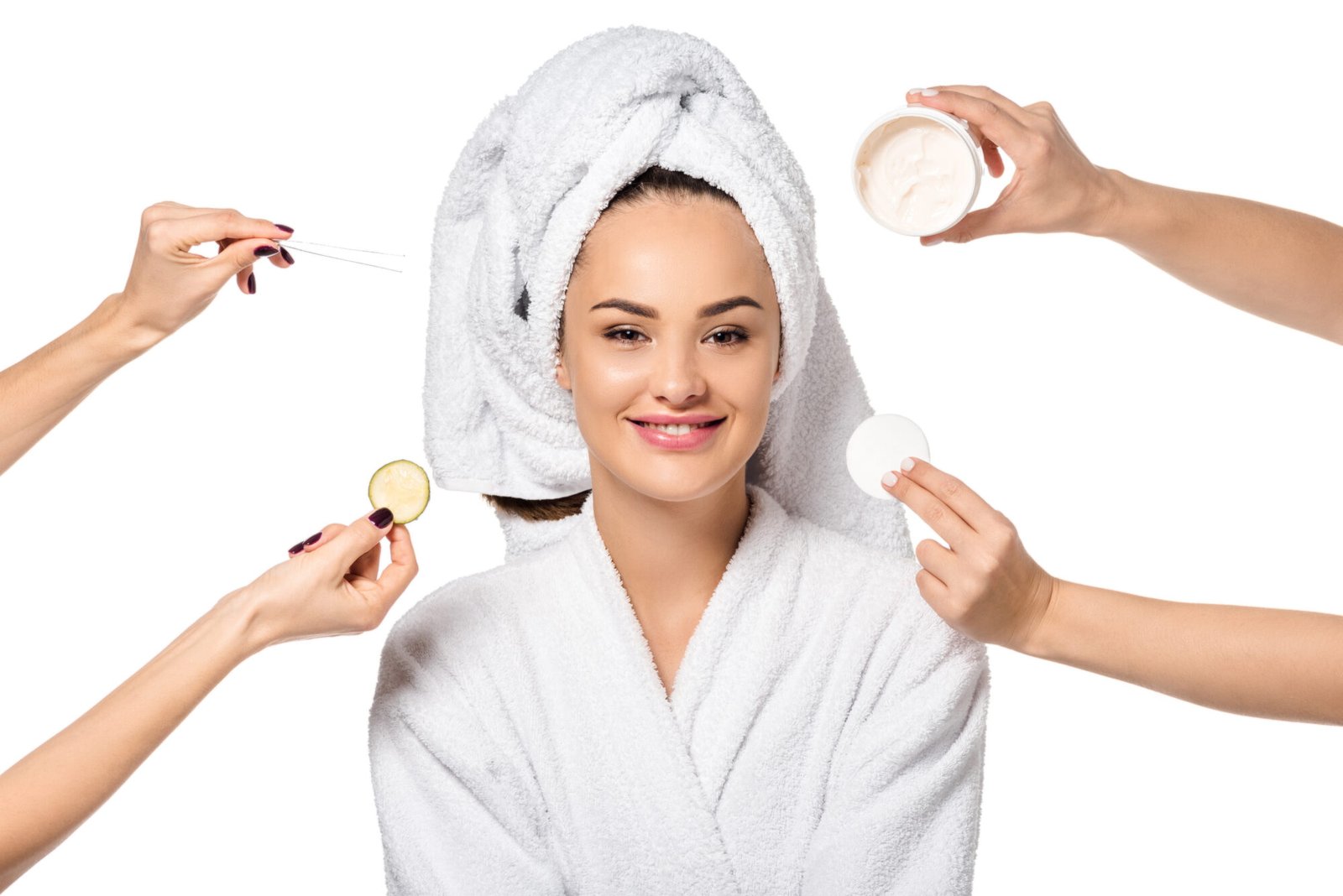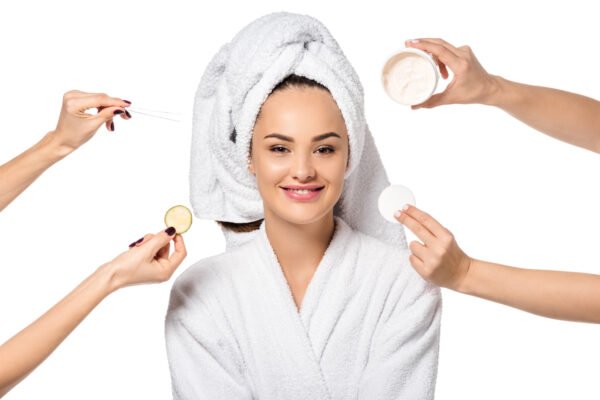Introduction
Have you ever had greasy foreheads and dry cheeks? You have company. Welcome to Combination Skin, a skincare issue many people have experienced, but few know how to solve. This tutorial is for beauty enthusiasts and skincare newbies who want to perfect the balanced routine for combination skin. We’ll teach you how to create a regimen that balances your skin and boosts confidence.
Understanding Combination Skin
People with combination skin have parts of their face that are both oily and dry. The forehead, nose, and chin (the “T-zone”) are oily, while the cheeks stay normal or dry. Because of this, it can be hard to find a skincare program that works well for both issues.
You might wonder why some people have combination skin. Your genes play a big part, but your habits and surroundings can also change how your skin acts. Understanding these details is essential to make a practice that works for you.
To care for combination skin, you must use items that balance oil production and moisten dry areas. After following a good routine, your face will feel clean, healthy, and glowing.
The Importance of a Balanced Routine
For people with combination skin, a well-balanced skin care practice is essential. It doesn’t ignore sticky or dry spots. With the proper routine, sticky areas won’t break out, and dry areas will feel and look better, giving your skin a more even texture and look.
To balance your routine, you must pick items that work well together instead of worsening one problem. Choose light formulas that won’t clog pores and that won’t make your face feel heavy, either.
Keep things the same. If you stick to a customized skincare routine, you may notice changes in your face’s balance and health. As time goes on, you’ll feel better about your skin tone.
Cleansing A Fresh Start Every Day
Cleansing is the first step in any good skincare practice for people with combination skin. It removes oil, dirt, and makeup, preparing your skin for the next step. But if you have combination skin, picking the correct cleaner is essential.
Choose a mild cleaner that doesn’t contain sulfates and won’t strip your skin of its natural oils. Many great gel-based cleaners can remove extra oil without drying out the cheeks. Look for ingredients like salicylic acid, which keeps pores clear while controlling oil production.
Always wash your face twice daily, in the morning and at night, to keep your skin clean and healthy. Making this a regular habit will help keep oily areas from breaking out and dry areas from drying out.
Exfoliating for Smooth, Even Skin
Exfoliation is essential for people with combination skin because it helps remove dead skin cells and clears out pores. Finding the right mix for your skin type is essential for exfoliating without worsening your skin.
If you have combination skin, you should use light exfoliation. Chemical exfoliants, such as alpha hydroxy acids (AHAs) or beta hydroxy acids (BHAs), can give your skin an excellent clean without rough scratching. These acids remove dead skin cells and shrink pores, making your face smooth and clean.
Do it no more than once or twice a week. Finding the right frequency for your skin is essential, as exfoliating too often can make it dry and sensitive.
The Role of Toning
Toners are essential for keeping combination skin balanced because they restore the skin’s natural pH and shrink pores. Using the right toner can help your face prepare to accept the benefits of the following treatments and creams.
Pick a toner that doesn’t contain alcohol and is made with soothing ingredients like rose water or chamomile. These can soothe heat and discomfort and refresh your face without drying out. Niacinamide-containing toners can also help control oil production and improve the appearance of the skin.
After you wash and scrub your face, gently sweep the toner across it with a cotton pad. This last step should make your face feel clean and ready to be fed.
Moisturizing Finding the Perfect Balance
Even dry parts of combination skin need to be moisturized. The hard part is finding a lotion that keeps dry skin from worsening without making the T-zone oily.
Light gel-based creams are an excellent choice for people with combination skin. They keep you hydrated without making you feel greasy. Hyaluronic acid and other ingredients like it are beneficial because they keep moisture in the skin without closing pores.
As a daily habit, moisturize your skin every morning and night after you wash and tone it. Staying hydrated will improve the structure of your skin, making it feel normal and soft.
Sunscreen: A Must-Use Daily Shield
Sunscreen should be an essential part of your daily routine for combination skin because it protects skin from sun damage. UV rays can worsen dry and oily skin, speed up aging, and make skin tone uneven.
Make sure the sunscreen you choose has at least SPF 30. Light, non-greasy formulas are best because they protect your skin without making it feel heavy or oily. Look for sunscreens containing zinc oxide or titanium dioxide for good protection.
Even if it’s dark, put on sunscreen every morning. This daily protection will help keep your skin healthy and stop skin problems from happening in the future.
Spot Treatments Targeting Imperfections
People with combination skin sometimes break out, especially in the oily T-zone. You can get help in specific areas with spot treatments that won’t hurt the rest of your skin.
For spots, look for salicylic acid or benzoyl peroxide products, which are known to help fight acne. These foods can help lower swelling and speed up the mending process.
After your lotion, only put spot treatments on the areas that hurt. With this level of accuracy, you can fix flaws without drying out the skin around them.
Face Masks for Extra Care
Putting on a face mask is a fun and easy way to improve the appearance of your combination skin. Masks can also help with specific problems by deeply hydrating or detoxifying as needed.
Using multiple masks at a time is a great way to treat combination skin. To do this, you put on different masks over different parts of your face, each fitting its own needs. For example, a clay mask on your T-zone can control oil, and one on your face can soothe dry skin.
Use a face mask once or twice weekly as part of your practice. After this special treat, your face will feel deeply cared for and refreshed.
Hydrating Overnight Masks
Overnight masks are a great way to treat combination skin because they feed your skin deeply while you sleep. They are made to keep your skin wet and fix it overnight, so when you wake up, your skin looks better.
Look for sleep masks that are light and won’t clog your pores. Flavonoids and green tea can calm and moisturize your skin without blocking pores. These masks restore your skin’s wetness, making it glow naturally.
After your evening lotion, put on a nighttime mask and let it do its thing while you sleep. This extra step can make a big difference in how soft and moisturized your skin feels.
Keeping Hydrated from Within
Good skin care practices are essential, but skin health comes from the inside. Staying hydrated is essential for keeping your skin balanced because dehydration can worsen oily and dry skin.
Aim to drink eight glasses of water daily, but change this number based on your activity level and the weather. Keeping your body hydrated helps your skin’s natural barrier, which generally gives you a better-looking face.
Along with drinking water, you might want to eat many foods high in vitamins and healthy fats. Berries, bananas, and nuts are some foods that can give you essential nutrients that are good for your skin from the inside out.
Building a Routine That Works for You
Finding the best skincare routine for combination skin takes trial and error because everyone’s skin is different. Pay attention to how your skin reacts to different treatments and products, and be ready to change your schedule if needed.
Cleansing, toning, and drying should be your first steps. Then, over time, add steps like scrubbing and face masks. Pay attention to what your face wants and be open to changing how you do things.
Keep a skin care journal to track what you do and how your face changes. This will help you find out what works best for your combination skin.
Conclusion: Your Path to Radiant Skin
Finding the best routine for combination skin can be a fun journey. You need to know your skin needs and choose the right items to achieve a healthy and glowing appearance.
It’s essential always to be the same. Don’t let small failures get you down; stick to your plan. If you wait and don’t give up, your skin will eventually respond positively, giving you a healthy, bright look.
Talk to a doctor or other skin care provider for more advice. They can provide help and suggestions tailored to your needs.









